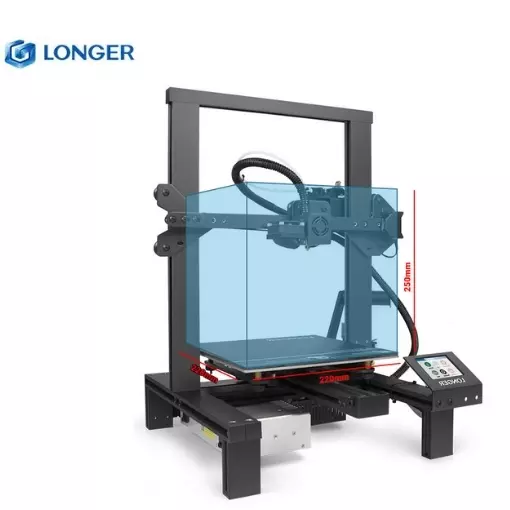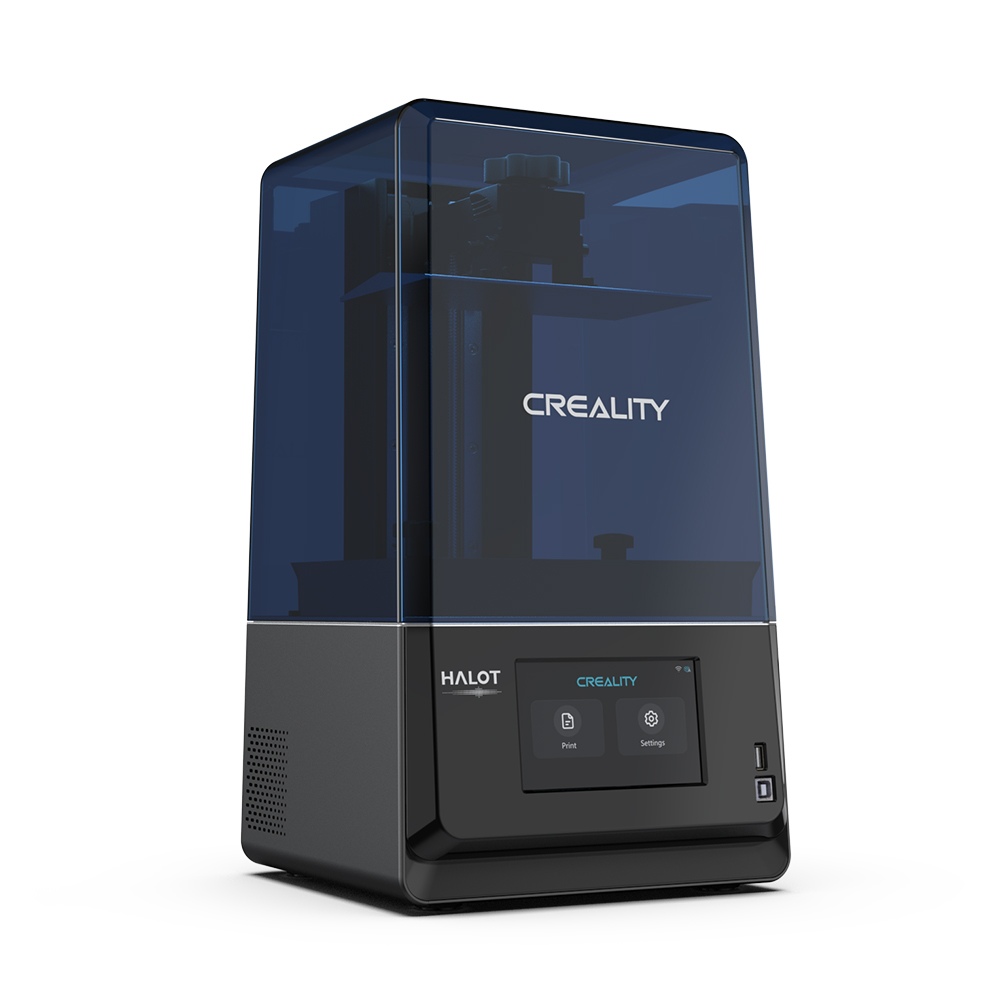Compare LK4 vs Halot One Plus
Comparison between the best 3D printers
Choose the best 3D printer at the best price. The cheapest 3D printers are here.
Buy a 3D printer here with 3D Fila.
 |
 |
|
| Model | LK4 |
Halot One Plus[BUY Halot One Plus] |
| Printing Material | Filament | Resin |
| Buy Filament for Longer 3D LK4 | Buy Resin forCreality 3D Halot One Plus | |
| Estimated price | $200,00 | $399,00 |
| Manufacturer | Longer 3D | Creality 3D |
| Release Year | 2019 | 2022 |
| Print Volume [mm] | 220x220x250 | 102x172x160 |
| Printer Size [mm] | 402x425x505 | 236x245x416 |
| Weight [kg] | 7,8 | 6,8 |
| Power Loss Recovery | YES | NO |
| Maximum Resolution [mm] | 0,1 | |
| Processor | 8 bits | |
| Display | Touchscreen TFT 2,8'' | |
| Power Supply | 12V / 360W | |
| Connectivity | SD / USB | USB / Wi-Fi |
| Operating systems | Windows, Mac, Linux | |
| Date of registration in the system | 2021-04-15 | 2022-10-11 |
| Release date | 2019 | 2022 |
| Extra features | The Longer LK4 is a versatile 3D printer capable of working with a wide range of filaments, such as PLA, ABS, TPU, copper, wood and carbon fiber, thanks to its 0.4mm nozzle and heated bed up to 110°C. With a printing accuracy of between 0.05-0.4mm, it stands out for its solid construction with an aluminum frame, weighing around 7kg, and a robust 24V and 15A power supply. The kit includes an Allen key, a 7/10 key, a microSD card with USB adapter, a spatula, cable ties, a power cable, 5m of filament and a spare filament end sensor. Assembly is simplified, with around 90% of the equipment pre-assembled, and detailed instructions assist in the process. Special features include print recovery after power failure, a filament end sensor, a super-adhesive printing surface and an intuitive color touchscreen display. The design features smooth profiles for easy assembly, and the position of the filament holder optimizes the filament path to the extruder. The LK4 is a solid choice for 3D printing enthusiasts looking for quality and versatility. | Crealitys Halot-One Plus printer stands out for its 4K+ resolution that delivers sharp details and consistent surfaces. It features a fast and responsive 5-inch LCD interface, as well as easy-to-use Halot Box software. It offers Wi-Fi connectivity and remote print monitoring, as well as an integrated air filtration unit, a rare feature in this price range. The Halot-One Plus is designed for the prosumer market, combining high quality with advanced features such as Wi-Fi and air filtration. During testing, it stood out for implementing these features at an affordable cost, while maintaining functionality. It features an attractive design with a UV-resistant blue cover and a robust dual rail system for the Z-axis, ensuring smooth and consistent movements. The large LCD and high resolution of the LCD mask (4320 x 2560) are other strong points, allowing for fine details and textures in prints. |
| Support for multiple colors and materials (AMS and CFS) | NO | NO |
Notes * |
||
| Cost-benefit | 7 / 10 | 8 / 10 |
| Hardware | 2 / 10 | 1.4 / 10 |
| Tela | . | . |
| Print volume | 3 / 10 | 3 / 10 |
| Performance | 1 / 10 | 9 / 10 |
| [BUY Halot One Plus] |
Conclusion |
| In comparing the Longer 3D LK4 and the Creality 3D Halot One Plus, it is clear that both printers offer unique advantages catering to different user needs and priorities within the 3D printing community. The Longer 3D LK4 is an economical choice offering versatility in filament compatibility and an intuitive design, making it suitable for hobbyists and enthusiasts who seek a solid and reliable entry-level printer. With features such as power loss recovery and a broader print volume, the LK4 accommodates a range of printing projects while ensuring ease of use with its near-complete pre-assembly and supportive user interface. Its strengths are particularly evident in cost-effectiveness and user-friendly functionalities, earning a commendable cost-benefit rating. On the other hand, the Creality 3D Halot One Plus positions itself as a more advanced solution for users looking for high precision and quality in their prints. With its superior 4K+ resolution, integrated air filtration, and innovative connectivity options like Wi-Fi, the Halot One Plus is tailored for the prosumer market. It excels in performance, showcasing the capability to produce intricate details, which would particularly appeal to users focusing on professional-grade outputs or those requiring high-resolution capabilities for detailed projects. While the LK4 focuses on affordability and versatility, making it a solid choice for new users or those on a budget, the Halot One Plus presents a higher initial investment but compensates with enhanced features and print quality suitable for more demanding applications. Ultimately, the decision between these two models should weigh personal priorities—whether the need is for cost-effectiveness and broad material compatibility or for advanced features and high-resolution printing—aligning the choice with specific 3D printing goals. |

